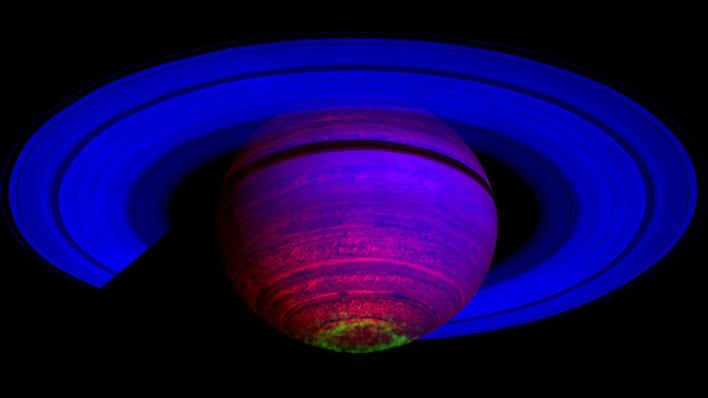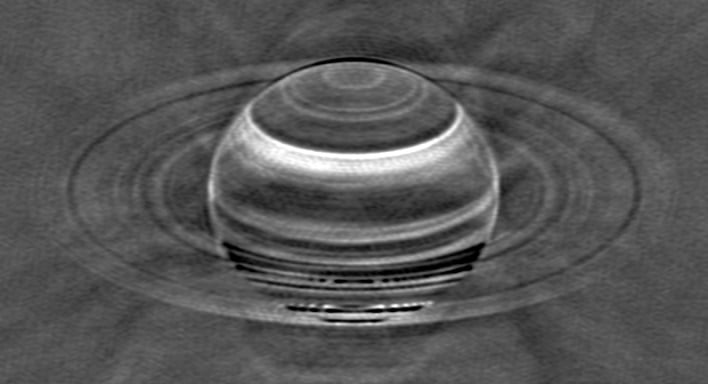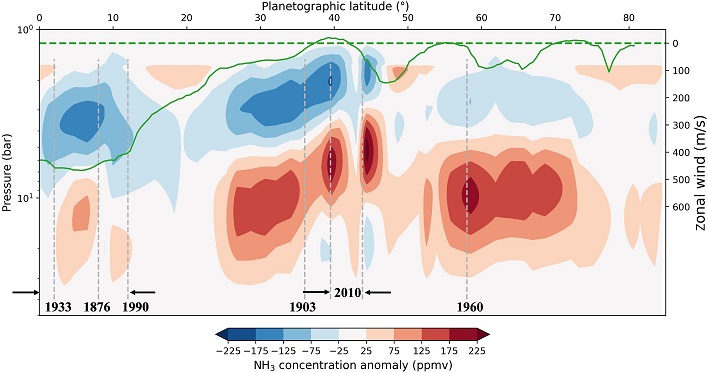Terrifying Megastorms Impact Saturn For 100 Years Leaving Scientists Utterly Stumped

In 2020, NASA stated that a new analysis from its Cassini spacecraft found a viable explanation for what is keeping the upper layers of Saturn so hot: auroras at the planet's north and south poles. By measuring the density of the atmosphere, scientists were provided the information needed to find the temperatures that peaked at the auroras, indicating that auroral electric currents heat the upper atmosphere. This led to the scientists being able to calculate wind speeds, allowing them to better understand the upper atmosphere of the gas giant and a key element in understanding space weather and its impact on Saturn and other planets in the solar system. Now, another group of researchers has decided to dive even deeper into the data sent back by the Cassini spacecraft and look into why these megastorms left unexpected long-lasting signatures on the planet.
The research paper stated that the team utilized the last six recorded occurrences of past storm eruptions, with the most recent one being in 2010. That entire life span of the 2010 storm was captured by Cassini. In 2015, researchers also used VLA to probe even deeper into the deep response of Saturn's troposphere in relation to the giant storms.

These megastorms, often referred to as "Great White Spots," erupt once every 20 or 30 years in the planet's northern hemisphere and last for several months. Astronomers have detected six of these massive storms since 1876, with the most recent one occurring in 2010. It is the remnants of these storms, however, that have researchers pondering why there are persistent chemical anomalies left behind.
"For most of the time, Saturn's atmosphere looks hazy and featureless to the naked eye in contrast to Jupiter's colorful and vibrant atmosphere," the researchers wrote in the paper published in the journal Science Advances. "This picture changes when we look at Saturn using a radio eye."
Amazingly, the team was able to find traces of all six of the recorded storms since 1876, along with a potential new storm that was not detected before. The remnants are only detectable through radio wavelengths, which take the form of large gas anomalies.
The ramification of these anomalies, according to the authors of the study, is that these massive storms seem to drive an ammonia transport process that takes ammonia gas from Saturn's upper atmosphere to the lower atmosphere of the planet. The team remarked that the mechanisms behind these atmospheric anomalies remain a mystery.
"Understanding the mechanisms of the largest storms in the solar system puts the theory of hurricanes into a broader cosmic context, challenging our current knowledge and pushing the boundaries of terrestrial meteorology," explained lead study author Cheng Li, assistant professor at the University of Michigan, in a statement.


